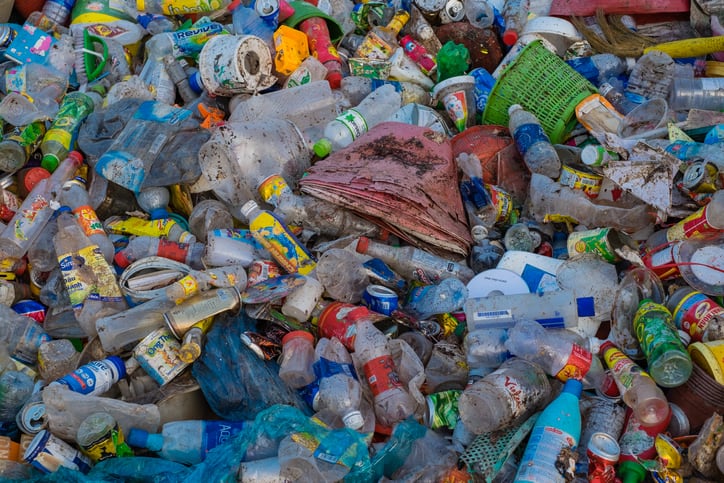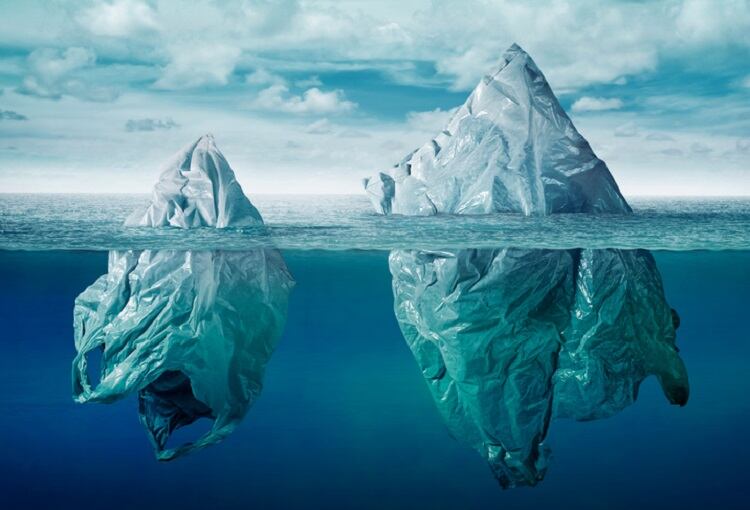At the World Economic Forum (WEF) annual meeting this week in Davos, Switzerland, waste experts gathered to discuss plastic pollution, and how industry, consumers and policymakers can address this growing environmental issue.
“The problem is, [plastic] is such a persistent material,” Heather Koldeway, fellow at the National Geographic Society, US, told delegates yesterday (23 January 2019). “It lasts for hundreds or thousands of years…so unless it has been burnt, every single piece of plastic every made still exists on our planet.”
Not only is plastic durable, but industry has not yet transitioned from the linear to circular economy required to address this major pollution issue.
“Globally, only 9% of plastic is recycled,” she continued. “We are a way off…the circular economy and proper waste management that we dream off.”
A question of economics
While Tom Szaky, founder and CEO of post-consumer waste-focused TerraCycle, said he is optimistic this relatively new problem – the modern conception of waste came into being just 70 years ago – can be addressed, the solution relies on developing viable business mechanisms. “We need to make it ‘practically’ possible to recycle and make it financially profitable for companies to do so.”
According to Szaky, almost everything in the world is technically recyclable. However, “what makes something practically recyclable is entirely due to economics,” he explained.
Plastics in numbers
More than 8 million tonnes of plastic end up in our oceans each year
Over 100,000 marine animals die every year from plastic consumption or related injuries
If nothing changes, by 2050 the weight of plastic in the seas will be greater than the weight of fish
Globally, only 9% of plastic is recycled
Microplastic particles have been found in 90% of Swiss soils from Geneva to Graubünden
Waste management and ‘urban mining’ firms – companies that reclaim raw materials from waste – are just that, firms. They will only collect and process materials that can be sold at a profit. “If it costs more to collect and process [than the on-sell price], that’s an unprofitable business model…They will instead look at what is the cheapest way to dispose it within the laws of the land,” he continued.
This increases the practice of littering, particularly in countries lacking the infrastructure to turn waste into energy or landfill, which in turn pollutes the world’s rivers and oceans.
Good vs bad plastics
If we are to recycle, both industry and consumers must understand which plastics are preferred by waste management companies.
“It’s all about value,” Szaky explained. “It’s not some ‘magic’ about what can be recycled or not. What recyclers want are clear, rigid plastics. The lighter the better, in the sense that colour is a contaminant. And stay away from [plastics] that are complex. Give the waste management industry what it wants.”
Increased focus on product design can also encourage the reusing and recycling of plastics. Often, products are designed to appeal to consumers and marketers, but without much thought given to its post-consumer life, said Koldeway.
Organisations need to design with that future in mind, she continued. “So [rather than going] from plastic to landfill or from plastic to the ocean, [we find a solution to go from] plastic to plastic.”
Shared responsibility
Many key industry players have made investments in reducing plastic packaging. Swiss food giant Nestlé, for example, has committed to make 100% of its packaging recyclable or reusable by 2025, with a particular focus on eliminating plastic-waste.

PepsiCo has also made public its objective to use 50% recycled plastic in its bottles across the European Union by 2030, and Coca-Cola has committed to collect and recycle the equivalent of 100% of its packaging globally by 2030.
As individual consumers, we can put pressure on these multinationals to manufacture plastic-free products, said Szaky. “You need to start demanding those things. If they’re not available, complain.
“It comes down to us as individuals who are out there purchasing these products to buy the products that you can locally recycle, and then to do so.”
And so where do policymakers and governments come into all this? The panellists stressed we cannot rely on industry alone, nor the influence of supply and demand, to combat this issue.
“This is no single silver bullet solution to this plastic problem that we’ve put on the world,” said Peter Thomson, the United Nation’s secretary-general’s special envoy for the ocean.
“There are going to be multiple solutions, and everybody with good intentions has to work together. Responsibility goes from the individual to the global organisation and everybody in between. We all have to work on this.”


